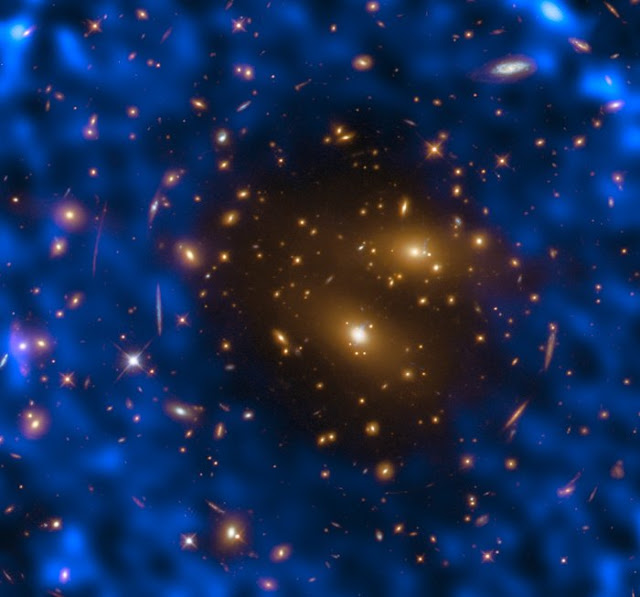

| Online: | |
| Visits: | |
| Stories: |

| Story Views | |
| Now: | |
| Last Hour: | |
| Last 24 Hours: | |
| Total: | |
The Hole in the Universe
Thursday, February 23, 2017 22:11
% of readers think this story is Fact. Add your two cents.
The events surrounding the Big Bang were so cataclysmic that they left an indelible imprint on the fabric of the cosmos. We can detect these scars today by observing the oldest light in the Universe. As it was created nearly 14 billion years ago, this light — which exists now as weak microwave radiation and is thus named the cosmic microwave background (CMB) — has now expanded to permeate the entire cosmos, filling it with detectable photons.
The CMB can be used to probe the cosmos via something known as the Sunyaev-Zel’dovich (SZ) effect, which was first observed over 30 years ago. We detect the CMB here on Earth when its constituent microwave photons travel to us through space. On their journey to us, they can pass through galaxy clusters that contain high-energy electrons. These electrons give the photons a tiny boost of energy. Detecting these boosted photons through our telescopes is challenging but important — they can help astronomers to understand some of the fundamental properties of the Universe, such as the location and distribution of dense galaxy clusters.
Credit: ALMA (ESO/NAOJ/NRAO)/T. Kitayama (Toho University, Japan)/ESA/Hubble & NASA
This image shows the first measurements of the thermal Sunyaev-Zel’dovich effect from the Atacama Large Millimeter/submillimeter Array (ALMA) in Chile (in blue). Astronomers combined data from ALMA’s 7- and 12-metre antennas to produce the sharpest possible image. The target was one of the most massive known galaxy clusters, RX J1347.5–1145, the centre of which shows up here in the dark “hole” in the ALMA observations. The energy distribution of the CMB photons shifts and appears as a temperature decrease at the wavelength observed by ALMA, hence a dark patch is observed in this image at the location of the cluster.
Contacts and sources:
Richard Hook
ESO
Source:





Somebody tried exploding the unexplodable… its in the data, of before.

Thas why ‘it’ states the re-accumulation of things.
Why?
Humans, an life, an annihilation… same.
Yep, ‘kinda’ super black-hole cascading implosion-explosion event.
Think of superior none human challenged Sith lords…/
A war against the machines {mechanoids}.
Autonomous machine like beings {good/directives}… Vs biologically evolving Sith {evil/corruption}.
Machines are hard to find in the depths of space. {no signals}
Why does humanity have a love for GOOD robots, >as above^^^